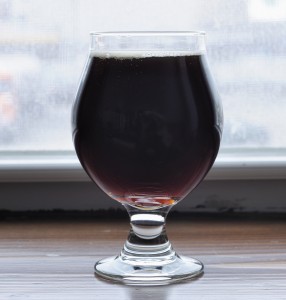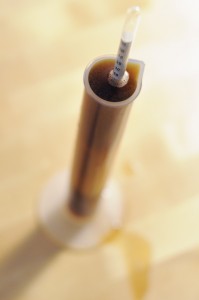 Tasting Notes:
Tasting Notes:
Judged as a BJCP Category 11c Northern English Brown Ale.
Aroma (10/12):
The first thing that strikes you is the deep biscuity malt followed by some toasted sourdough bread notes. There is a hint of caramel that is pleasant and nuanced as well as some light bittersweet chocolate notes. The English yeast strain is quite apparent with esters reminiscent of apricot. Perfumey and slightly herbal hops are very low and in the background. No diacetyl or other off-flavors.
Appearance (1/3):
Very deep mahogany brown. Clear, with a tan, persistent head. Beer is a bit too dark for the style.
Flavor (15/20):
The beer is dominated by round malt flavors which emphasize deep, toasty, melanoidin filled flavors. There is only a hint of caramel-like sweetness. The malt character is slightly drying with a touch of tart acidity from the chocolate malt. Beer starts out a hair sweet, but finishes quite dry. There is a low hop bitterness that is just enough to balance and is true to the style. Malt is perhaps just a bit too intense.
Mouthfeel (4/5):
Medium-bodied with a nice creamy level of carbonation. Just a hint of roasty astringency.
Overall Impression (7/10):
This is a really well-balanced English Brown Ale. The malt is complex and toasty almost to the point that it exceeds the limit of the style. Very sessionable with malt complexity to keep you interested and modest alcohol levels to keep you coherent. A very nice beer.
Total: 37/50 Good
Read the full recipe here.

